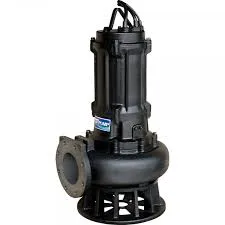English
- Afrikaans
- Albanian
- Amharic
- Arabic
- Armenian
- Azerbaijani
- Basque
- Belarusian
- Bengali
- Bosnian
- Bulgarian
- Catalan
- Cebuano
- Corsican
- Croatian
- Czech
- Danish
- Dutch
- English
- Esperanto
- Estonian
- Finnish
- French
- Frisian
- Galician
- Georgian
- German
- Greek
- Gujarati
- Haitian Creole
- hausa
- hawaiian
- Hebrew
- Hindi
- Miao
- Hungarian
- Icelandic
- igbo
- Indonesian
- irish
- Italian
- Japanese
- Javanese
- Kannada
- kazakh
- Khmer
- Rwandese
- Korean
- Kurdish
- Kyrgyz
- Lao
- Latin
- Latvian
- Lithuanian
- Luxembourgish
- Macedonian
- Malgashi
- Malay
- Malayalam
- Maltese
- Maori
- Marathi
- Mongolian
- Myanmar
- Nepali
- Norwegian
- Norwegian
- Occitan
- Pashto
- Persian
- Polish
- Portuguese
- Punjabi
- Romanian
- Russian
- Samoan
- Scottish Gaelic
- Serbian
- Sesotho
- Shona
- Sindhi
- Sinhala
- Slovak
- Slovenian
- Somali
- Spanish
- Sundanese
- Swahili
- Swedish
- Tagalog
- Tajik
- Tamil
- Tatar
- Telugu
- Thai
- Turkish
- Turkmen
- Ukrainian
- Urdu
- Uighur
- Uzbek
- Vietnamese
- Welsh
- Bantu
- Yiddish
- Yoruba
- Zulu
Telephone: +86 13120555503
Email: frank@cypump.com
Oct . 05, 2024 19:48 Back to list
Design and Features of a Double Action Suction Pump for Enhanced Fluid Transfer Efficiency
Design and Functionality of a Double Action Suction Pump
A double action suction pump is a crucial piece of equipment used across various industries, including water treatment, oil extraction, and sewage management. Its design and functionality are pivotal in enabling efficient fluid transfer, ensuring uninterrupted operation in numerous applications. This article explores the intricacies of its design and the mechanisms that contribute to its effectiveness.
The defining characteristic of a double action suction pump lies in its ability to operate on both strokes of the pump's piston, enhancing its efficiency. In conventional single-action pumps, fluid is drawn into the chamber during one stroke and discharged during the next. However, a double action pump simultaneously pumps fluid during both the upstroke and downstroke. This design significantly increases the flow rate and makes it more effective in applications requiring rapid fluid transfer.
At its core, a double action suction pump consists of a cylinder, piston, inlet and outlet valves, and a crank mechanism. The cylinder houses the piston that creates a varying volume, enabling suction and expelling of liquids. The inlet and outlet valves play a critical role in controlling fluid movement; they open and close at the correct times to allow for unidirectional flow while preventing backflow.
design and functionality of a double action suction pump for ...

The piston's movement is typically facilitated by a crank, which is driven by either a motor or a manual handle. As the crank rotates, it generates a cyclical motion that translates into the linear movement of the piston. This reciprocating action effectively creates a vacuum on the upstroke, drawing fluid into the cylinder, while the downstroke compresses the fluid and forces it out through the outlet valve.
One of the key advantages of the double action suction pump design is its enhanced operational efficiency. Because it dispenses fluid with each stroke, it can move larger volumes of liquid in a shorter time period compared to single action pumps. This efficiency is particularly beneficial in scenarios requiring rapid dewatering, such as in mining or construction sites.
Furthermore, the design of a double action suction pump can be tailored to meet specific operational requirements. Variations in size, material, and valve design can be implemented to handle different fluid types, including corrosive or viscous liquids. This versatility makes the pump suitable for a wide array of industrial applications, where customized solutions are essential.
In conclusion, the double action suction pump exemplifies a well-engineered solution for fluid transfer challenges across various sectors. Its dual-stroke functionality enhances flow rates and operational efficiency while allowing for adaptability in its design to meet specific requirements. As industries continue to evolve and face new challenges, the role of efficient fluid handling equipment like the double action suction pump will remain indispensable. The continuous advancements in pump technology will further enhance the effectiveness of this crucial tool, ensuring that it meets the demanding needs of modern applications.
-
ISG Series Vertical Pipeline Pump - Chi Yuan Pumps Co., LTD.|High Efficiency, Energy Conservation, Low Noise
NewsJul.29,2025
-
ISG Series Vertical Pipeline Pump-Chi Yuan Pumps Co., LTD.|High Efficiency&Energy-Saving
NewsJul.29,2025
-
ISG Series Vertical Pipeline Pump - Chi Yuan Pumps Co., LTD. | High Efficiency, Energy-Saving
NewsJul.29,2025
-
ISG Series Pipeline Pump - Chi Yuan Pumps | High Efficiency, Low Noise
NewsJul.29,2025
-
High-Efficiency Vertical Slurry Pumps for Mining & Industry Solutions
NewsJul.29,2025
-
High-Efficiency Pipeline Pump Solutions for Every Pipeline Pump Station
NewsJul.29,2025










